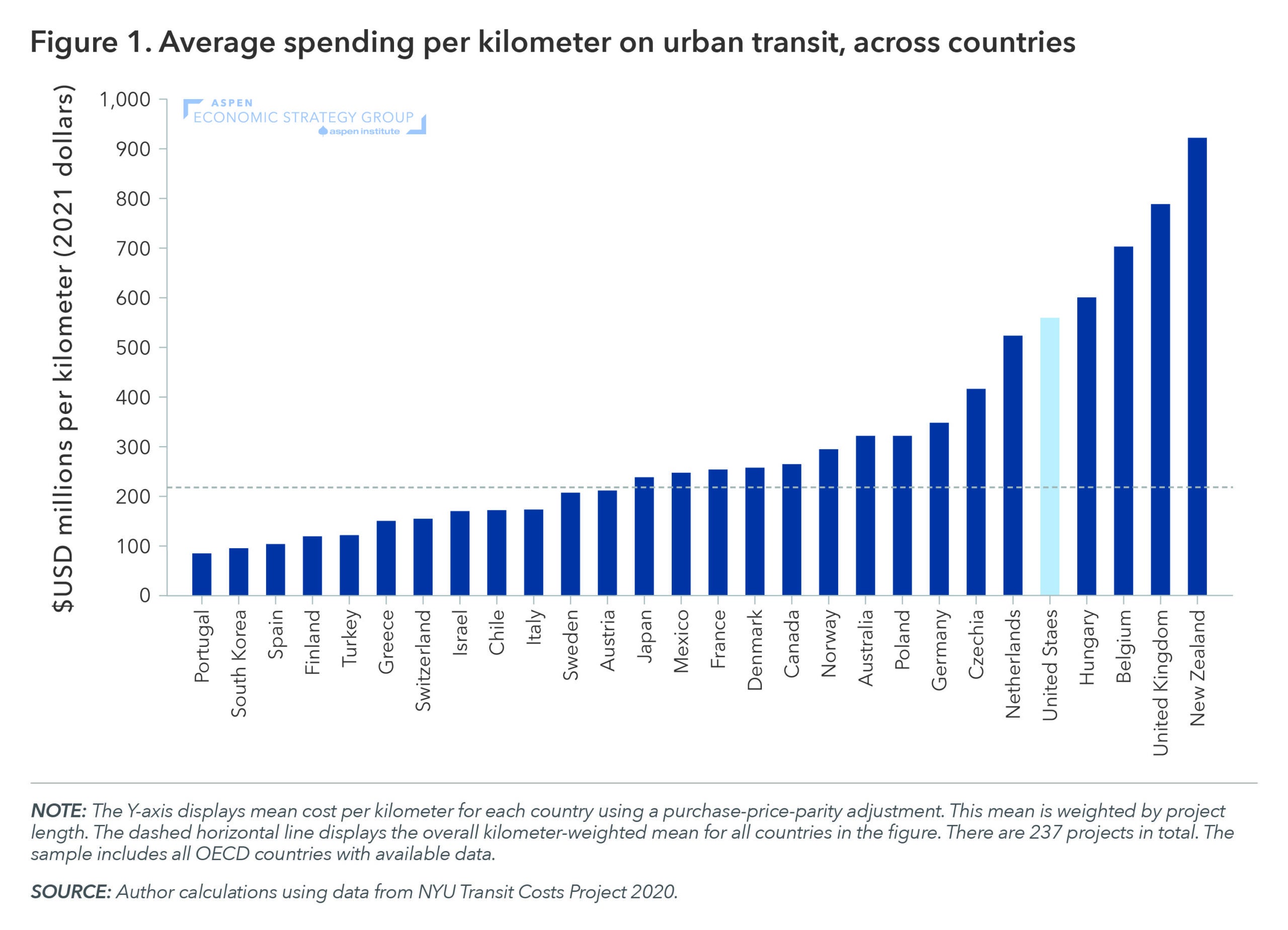
Top 12 Charts of 2024 from the AESG

As a group devoted to advancing evidence-based economic policy, the AESG appreciates the powerful role that charts play in telling the story of our economy. Enjoy twelve figures that showcase our work in 2024!
Figure 1: Manufacturing’s share of employment in the US has fallen consistently since the end of the Second World War.
In his AESG paper, Protectionism is Failing and Wrongheaded, Michael Strain argues that the goals of protectionist trade policies, including boosting US manufacturing jobs, are misguided. He points out that manufacturing employment in the US has been on the decline since the middle of the twentieth century.

Figure 2: The US labor market transformed over the past century due to productivity growth enabled by General Purpose Technologies (GPTs).
The US labor market transformed over the past century due to productivity growth enabled by General Purpose Technologies (GPTs). In their paper, Technological Disruption in the US Labor Market, David Deming, Christopher Ong, and Lawrence H. Summers explore past episodes of technological disruption in the US labor market, with the goal of learning lessons about the likely future impact of artificial intelligence.

Figure 3: The labor market is set to end 2024 nearly where Fed officials projected a year ago.
Luke Pardue’s December blog post examines employment trends over the past twelve months. Figure 2 illustrates that, while the path of the labor market has been uncertain this year, looking just at the unemployment rate, the job market is set to end 2024 quite close to where Federal Reserve officials predicted last December.

Figure 4: Construction costs in the US, particularly for urban transit megaprojects, are among the highest in the world.
Zachary Liscow’s paper, State Capacity for Building Infrastructure, highlights how infrastructure construction in the US is more costly and takes more time than other developed countries. For example, the US ranks fifth-highest in spending per kilometer of urban transit compared to other OECD countries.

Figure 5: Under a range of plausible policy and economic scenarios, the US federal debt is on an unsustainable path
In his paper, Eight Questions—and Some Answers—on the US Fiscal Situation, Jason Furman examines the current US fiscal situation and outlook. Even under scenarios with higher-than-expected productivity or lower-than-forecast interest rates, he finds that the US federal debt will continue to rise as a share of output through the next decade.

Figure 6: In the US, both violent and property crime rates fell nearly continuously from the early 1990s until mid-2020.
Jennifer Doleac’s paper, Why Crime Matters, and What to Do About It, describes recent trends in criminal activity across the US. Although measures of certain violent crimes have come down from their post-pandemic spike, she concludes that crime continues to be a first-order problem for a large number of communities.

Figure 7: US worker productivity is growing at its fastest pace since the decade-long surge of the 1990s.
In a Washington Post op-ed, U.S. productivity is popping. And it’s not because of AI, and an AESG IN BRIEF, The Recent Rise in US Labor Productivity, AESG Policy Director Luke Pardue attributed the recent upswing in US labor productivity in part to a surge in new business formation in the US. Figure 2 shows that in the first quarter of 2024, new business applications were tracking above 2019 levels by 54%.

Figure 8: CHIPS and Science Act investments tend to be in areas with both high STEM talent and above-average employment rates.
Luke Pardue’s IN BRIEF, Building Security in the Semiconductor Supply Chain, examines the talent needs of the semiconductor industry and analyzes data on the location of recent public and private investment in chip production. Such investments are largely in high-talent areas, an encouraging sign for their eventual success.

Figure 9: A higher share of women in the 35-to-44 age range across all races, income levels, employment statuses, regions and broad education groups are childless.
A Wall Street Journal article highlighted research from AESG Director Melissa Kearney, Author Phillip Levine, and Policy Director Luke Pardue demonstrating that the rise in childlessness amongst Americans is driving the decline in US birth rates.

Figure 10: Men spend an average of 6.6 non-sleeping hours alone each day, compared to 5.4 hours for women.
The Wall Street Journal featured data from Luke Pardue’s October blog post, The Widening Economic and Social Gaps Between Young Men and Women, on the decline in men’s labor force participation and increase in young men’s time spent alone.

Figure 11: The eight Ivy League schools accounted for less than 1 percent of total undergraduate enrollment in Fall of 2022.
In a blog post accompanying Melissa Kearney’s appearance on Bloomberg’s Wall Street Week, Luke Pardue points out that while conversations about higher education in America are often dominated by the Ivy League, these eight schools play a relatively small role in the overall college landscape and in the process of intergenerational economic mobility in America.

Figure 12: Recent Foreign Direct Investment flows are tied to the world’s major centers of tax avoidance.
Brad Setser’s AESG paper, The Surprising Resilience of Globalization: An Examination of Claims of Economic Fragmentation, evaluates the current landscape of global economic integration. Setser points out that a large share of the historical rise – and recent decline – in global financial flows can be attributed to tax avoidance strategies by multinational companies.
